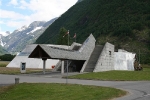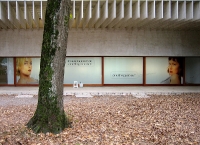website:
awards: 1997 Heinrich Tessenow Gold Medal, 1997 Pritzker Prize, Heinrich Tessenow Gold Medal, Pritzker Prize
Sverre Fehn (August 14, 1924 – February 23, 2009) was a Norwegian architect. Fehn was born in Kongsberg, Buskerud. He received his architectural education shortly after World War II in Oslo, a crisis course that would later become an independent school under various names during the next decades, today known as the Oslo School of Architecture and Design. He quickly became the leading Norwegian architect of his generation. In 1952–1953, during travels in Morocco, he discovered primitive architecture, which was to deeply influence his future work. Later he moved to Paris, where he worked for two years in the studio of Jean Prouvé, and where he knew Le Corbusier. At his return in Norway, in 1954, he opened a studio of his own. At the age of 34 Fehn gained international recognition for his design of the Norwegian Pavilion at the 1958 Brussels World Exhibition. In the 1960s he produced two works that have remained highlights in his career: the Nordic Pavilion at the Venice Biennale (1962) and the Hedmark museum in Hamar, Norway (1967–1979). Fehn's other notable works include Schreiner House in Oslo (1963) and Busk House at Bamble (1990); however, few of his projects were effectively built. He taught in Oslo's School of Architecture from 1971-1991 as a professor and principal from 1986-1989, as well as at the Cranbrook Academy of Art in Bloomfield Hills, Michigan.

 (5 vote, 92.00% worth checking out)
(5 vote, 92.00% worth checking out) 